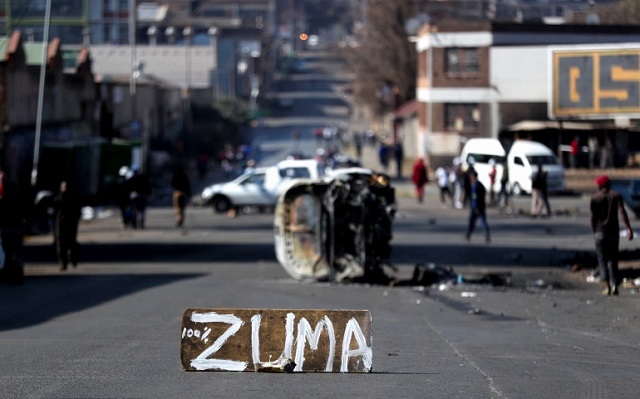
Why the arrest and detention of Jacob Zuma is dangerous for the unity and stability of the “rainbow nation”
THE LAST WORD | ANDREW M. MWENDA | The arrest and detention of former South African president, Jacob Zuma, for contempt of court is a sad event. No wonder, many South Africans have taken to the streets in violent protests at it. It is very possible the arrest of Zuma can lead to the disintegration of the post-apartheid state in South Africa, at least as we currently know it. This is largely because post-independence African elites use theories drawn from textbooks, written at Harvard and Cambridge, Stanford and Oxford, explaining experiences of Europe and North America, as the solution to our problems.
South Africa is a multi-ethnic state, hosting several ethnic and racial groups. These groups are sometimes hostile to each other, often very suspicious of the other – especially their intentions. The biggest challenge today is therefore one of nation building i.e. how to make these different ethnic and racial groups develop a common national consciousness. To achieve this requires appreciating the psychology of these different groups, most especially their fears and suspicions. It is on this basis that one can craft laws, policies and practices that address these fears and suspicions.
In 1994, the ANC under the leadership of Nelson Mandela seemed to appreciate this. It recognised that white people, for instance, were a rich and powerful minority who had dominated and terrorised black people for generations. The guilt of their actions had made them afraid, in fact terrified, of democracy. They saw majority (black) rule as a threat to their economic dominance, cultural life and a diminution of their racial status. If you were a black person who had been denied economic and other social opportunities like education, health and your cultural life, these fears of a privileged white aristocracy bordered on excessive self-indulgence.
Mandela’s aim was to build a rainbow (multi-ethnic, multi-racial) nation. To achieve this goal required making a series of compromises and giving a number of concessions to this privileged white aristocracy, many of which were morally offensive to the majority of black, colored and Indian people. Many people in these other racial groups felt that to redress the wrongs of apartheid required the expropriation of white property – land that had been forcefully taken from black people, mines that were privately owned, banks and other businesses that had been built on the back of forced or poorly paid black labor, etc. These feelings were strong.
But Mandela understood, that however much many black, colored and Indian people may feel that compromise with apartheid is immoral, it was important to accommodate the fears of the white minority, not only in law and policies but also in practices. Anyone who has watched the movie Invictus (based on the book by John Carling titled Playing the Enemy), would remember how Mandela demonstrated the importance of gesture in political and social reconciliation. There is a dramatic scene where Mandela goes to an ANC meeting that had just abolished the name Springbox, the South African nearly all-white national rugby team.
He tells the meeting that it is important to make whites feel a part of the new nation. One way to do this is to tolerate and even embrace their cultural symbols – like keeping the name Springbox. He himself had learnt and spoke fluent Afrikans, the language of white south Africans. There are many criticisms we can make of Mandela’s compromises with and concessions to whites. But there was one underlying theme: that to build a nation requires, and indeed demands, accommodation with things that may even be repulsive to your people. This demands political acumen, not legal theories.
The post South Africa’s slippery slope appeared first on The Independent Uganda:.
from The Independent Uganda: https://ift.tt/36JKLUJ
0 Comments